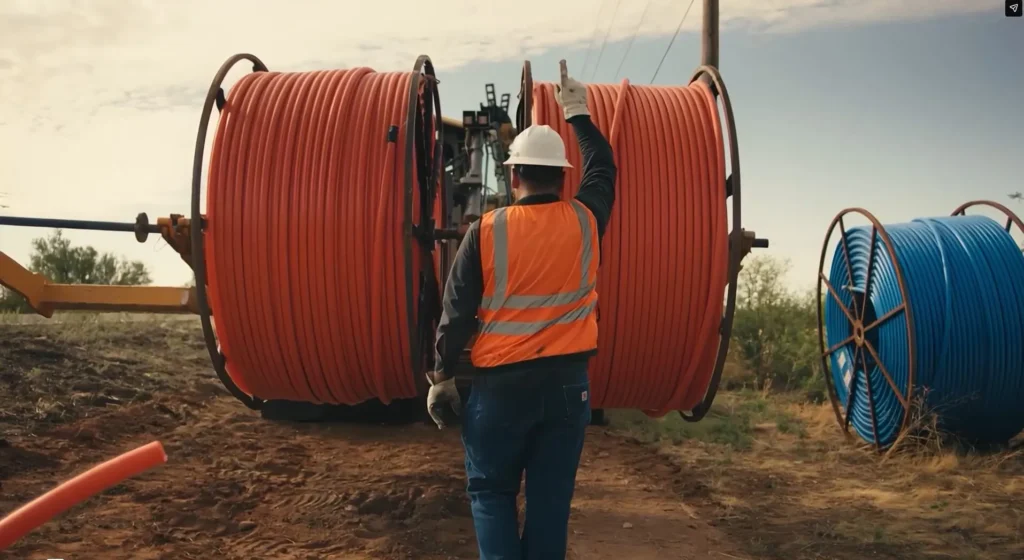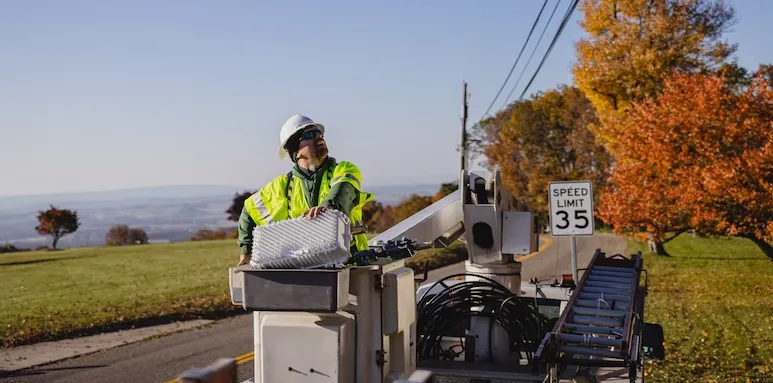As the end of 2023 approaches, it’s a great time to reflect on the impactful initiatives undertaken by America’s cable industry. The ongoing efforts and dedication of cable ISPs to extend high-speed broadband connectivity to those who need it the most are undoubtedly making a significant impact for millions of Americans. At the same time, companies are demonstrating a steadfast commitment to practices that reduce greenhouse gas emissions and improve environmental sustainability.
Highlighted below are themes and topics covered in NCTA’s stories over the past year, which reveal just a fraction of the myriad initiatives and challenges that are being tackled nationwide.
Rural Broadband
Over the last two decades, cable providers have invested more than $310 billion in the construction and enhancement of their networks nationwide. Significant strides have been made in the past year as they extend their services to regions that were previously without coverage.
- Public-private partnerships are working. Company commitments and collaborations with federal and state governments are playing a pivotal role in accurately targeting communities most in need of both financial support and improved broadband access. This effort is particularly evident in their projects to uplift underserved communities across the country.
- Expertise is key. A shining example (one of many!) of how and why cable broadband providers are the right ones to get the job done in rural America can be found in Midco, which has a deep-rooted presence across its footprint in Kansas, Minnesota, Nebraska, North Dakota, South Dakota and Wisconsin.
- Success isn’t easy. Cable providers work tirelessly to overcome obstacles to deploying broadband. From rocky terrain to adverse weather conditions to miles and miles that separate neighbors, they continually navigate these complexities to bring next-generation connectivity to as many people as possible.
Digital Inclusion
Cable providers are addressing the multifaceted challenge of enhancing digital inclusion demands through a comprehensive approach.
- The Affordable Connectivity Program (ACP) from the FCC, offering a monthly subsidy to qualifying low-income households for broadband service, has played a crucial role in extending broadband access and promoting digital equity. As of December 2023, the program has helped over 22 million households.
- For over a decade, cable providers have removed cost barriers to broadband access through equipment donations and subsidies, including donating over 220,000 computers, all while connecting more than 14 million qualifying households to their low-cost broadband adoption programs.
- Individuals also require the skills to navigate the online realm effectively. Acknowledging this necessity, cable providers continue to partner with local organizations and schools to provide digital literacy programs. These initiatives aim to impart vital digital skills encompassing online safety, email communication, job searching, and more.
10G
In 2023, the first 10G network deployments marked a monumental leap in connectivity.
- Comcast’s Xfinity 10G upgrade reached 10 million locations by February across 40 cities, and it began deploying DOCSIS 4.0 in select markets with plans for multi-gig speeds in 50 million locations by 2025.
- Mediacom elevated Iowa’s connectivity, as it completed its launch of the 10G platform in West Des Moines, supporting the ramp up of symmetrical speeds from 1 Gbps to 10 Gbps in the coming years.
- Charter, Cox, GCI, and Midco continued with their roadmap plans and are on target to achieve 10G speeds by 2025, meeting next-generation connectivity needs. The collective efforts of the cable industry signifies a transformative era in American connectivity.
Going Green
With climate change being a major issue the world is grappling with, the cable industry continues its commitment to environmental sustainability efforts.
- ISPs including Charter, Comcast, and Cox, have made commitments to be carbon neutral on or before 2035. They’ve also implemented best practices such as smarter fleet strategies to reduce their carbon emissions and recycling programs to reduce landfill waste.
- Since the beginning of the Voluntary Agreements program in 2012, U.S. consumers have saved $15 billion in energy costs thanks to the increasing energy efficiency of video equipment, and 78 million metric tons of CO2 emissions.
- In addition, more than 98% of new network devices, including modems and routers, met efficiency standards as a result of the Voluntary Agreements.
- Remote work, enabled by high-speed broadband has led to significant benefits for workers and the environment, including less vehicles on the roads. This translates to tremendous savings in gasoline purchased and a significant reduction in CO2 emissions.








